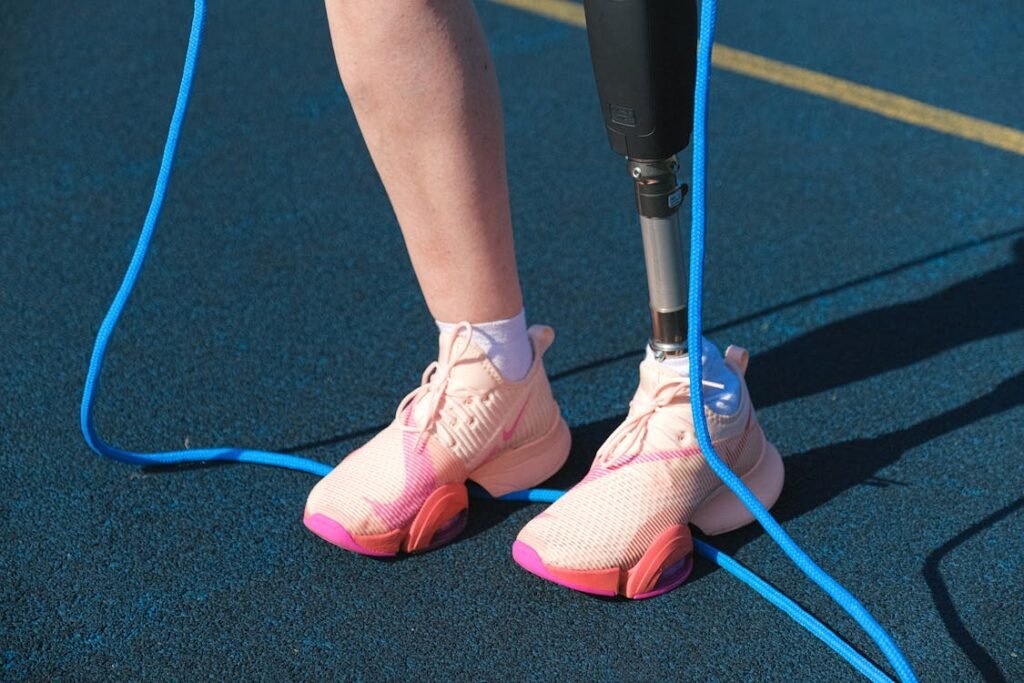When someone faces the possibility of losing a limb, the decision is never simple. Many try to save the limb through surgeries, hoping to keep what they were born with. But for others, the choice to amputate—though difficult—becomes a path to healing, strength, and independence.
This article shares real stories of people who made the brave decision to choose amputation over limb salvage. They didn’t just recover—they found new ways to live, work, move, and thrive. Their journeys aren’t about loss. They’re about taking control, finding freedom, and creating a life that works.
These are not just medical cases. They are deeply human experiences, full of emotion, hard choices, and quiet victories. Each story is different, but together, they show what’s possible when someone makes a bold choice for their future.
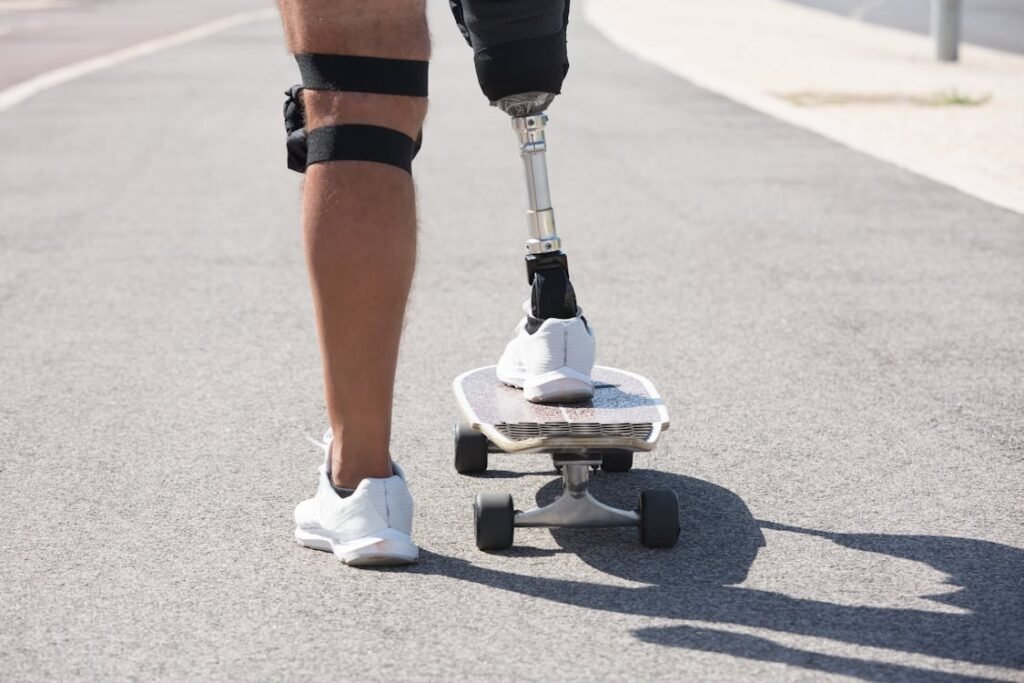
Ravi’s Story: From Endless Surgeries to a Fresh Start With a Prosthetic Leg
A Long Road With No Clear End
Ravi was 34 when his motorbike was hit by a speeding truck just outside Pune. His right leg took the full impact. Bones shattered, nerves were crushed, and blood flow was badly damaged.
He was rushed into emergency surgery and the doctors managed to save his leg—for the time being.
Over the next year, Ravi found himself in and out of hospitals. He underwent six surgeries in total. Each one brought hope, but none of them gave him the stability or strength he needed to walk normally.
His leg remained swollen and painful. He could no longer drive, work, or even go up the stairs at home without help.
Doctors explained that the only way forward might be another round of complex surgeries, skin grafts, and a long healing period. But there were no guarantees.
The leg might still be too damaged to function well. Ravi found himself stuck between fear and frustration—wanting to keep the leg, but tired of waiting for a life that never returned.
Making the Choice to Let Go
It was after his seventh hospital visit in ten months that Ravi sat down with his wife and parents to talk seriously about amputation. It was not an easy conversation. In his family, the idea of removing a limb was hard to accept.
There were emotional and cultural reasons for holding on. Everyone hoped things would eventually get better.
But Ravi had reached a point where saving the leg no longer felt like saving his life. He wanted to walk again, to get back to work, to play with his daughter. The doctors told him that with a well-fitted prosthetic and rehab, he could regain function within six months.
After thinking it through, Ravi decided to go ahead with the below-knee amputation. He described the moment as both terrifying and strangely freeing. For the first time, he felt like he was choosing a path—rather than just reacting to what had happened.
Recovery and Rediscovery
The days after the surgery were hard. Pain came in waves, and there were moments when Ravi doubted his choice.
But as his limb began to heal, and his strength returned, things started to shift. He received his first prosthetic fitting five weeks after surgery and began rehab two days later.
The first time he stood with the prosthetic, it felt strange and mechanical. But day by day, it began to feel more like a part of him. His balance improved. He could walk short distances.
By the third month, he was walking around the block with a cane. By month five, he was back at work—something he hadn’t done in over a year.
What surprised Ravi most was how quickly his energy came back. Before amputation, every movement took effort. Afterward, with the prosthetic leg, things became smoother. He no longer felt like his body was holding him back.
Life After the Decision
Today, Ravi wears his prosthetic leg with ease. He still does follow-ups to keep everything in good shape, but the difference in his daily life is dramatic. He drives, he travels for work, and he recently went on a short hike—something he thought he’d never do again.
Emotionally, the journey hasn’t been without its ups and downs. But Ravi says the decision to amputate gave him back his life. He no longer wonders what another surgery might bring. He knows what his body can do—and that confidence has changed everything.
He often speaks with others facing the same decision. His message is simple: holding on isn’t always strength. Sometimes, letting go opens the door to freedom.
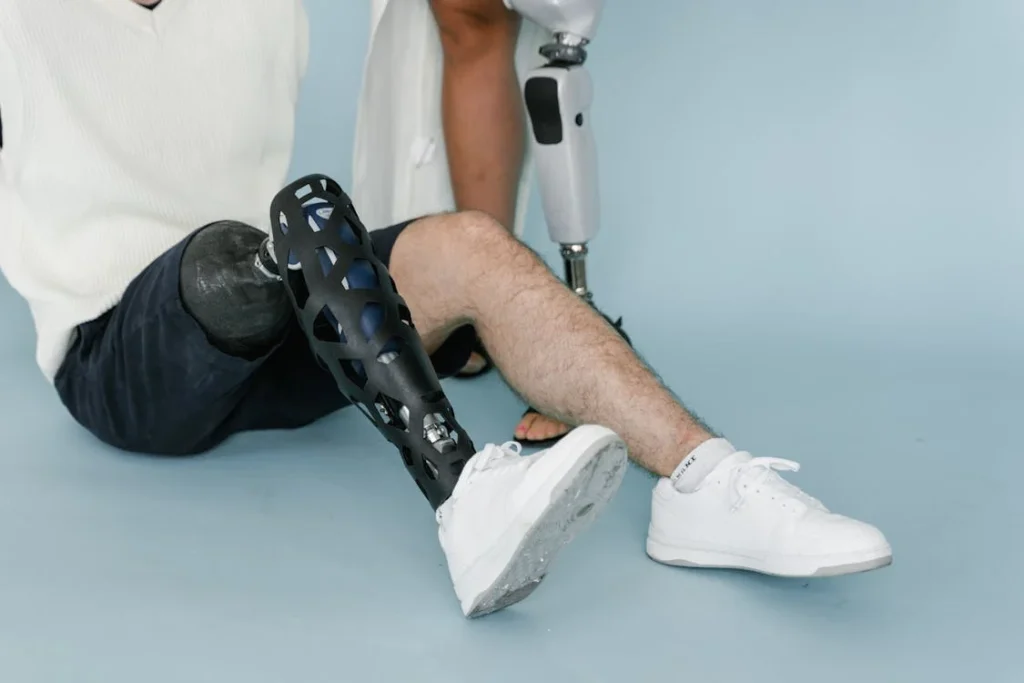
Fatima’s Story: Choosing Amputation for a Future Without Pain
A Childhood Marked by Pain
Fatima was born with a rare bone condition that weakened her left leg. By the time she was nine, she had already undergone three surgeries. Her leg was fragile, often swollen, and walking even short distances caused her pain.
Still, she did her best to keep up with her classmates. She wore braces, used crutches on bad days, and leaned on her mother when her energy ran out.
Doctors continued to recommend surgeries—more plates, bone grafts, and corrections to help the leg grow straight. Over time, Fatima began to dread hospital visits.
Every operation promised improvement, but recovery was slow and the pain never left her completely. By the time she was sixteen, she had undergone nine procedures, each with its own recovery time, school breaks, and emotional toll.
As she entered adulthood, Fatima started to wonder if holding on to the leg was worth the struggle. She was tired of being treated like a patient first and a person second. What she wanted most was to walk without pain and live without fear of the next surgery.
Choosing to Move Forward
At 21, Fatima met a peer who had chosen amputation at a younger age and now used a prosthetic leg.
The woman was walking independently, traveling, and even training as a yoga instructor. That conversation planted a seed. Could life without her painful leg be better than life with it?
After much thought and many discussions with her family and doctors, Fatima made the choice to undergo a below-knee amputation. For her, it wasn’t about giving up. It was about choosing a future that looked different—but finally felt within reach.
The day before the surgery, Fatima wrote in her journal that she wasn’t afraid. She felt ready. She was letting go of the pain, not just the leg.
A Different Kind of Healing
The weeks after surgery were difficult, not physically, but emotionally. Fatima felt a sense of loss. It wasn’t just about her leg—it was about years of effort, surgeries, and dreams that had revolved around keeping something that had caused her so much suffering.
But that sadness began to shift when her rehab started. Her prosthetist introduced her to a light, flexible prosthetic designed for active use. It took time to learn, but her body responded quickly.
For the first time in her life, she could stand for more than five minutes without pain. She could walk across a room without needing a brace or crutches.
As she practiced walking in rehab, her confidence returned. Fatima realized she was not just recovering—she was discovering a new way of living.
Reclaiming Her Life
Now 25, Fatima walks with ease, takes the bus to work, and recently started volunteering at a school for children with disabilities. She wears her prosthetic proudly.
Sometimes she covers it, sometimes she doesn’t. Either way, it’s part of her, and she sees it not as a loss, but as a symbol of her choice.
She often says that the hardest part wasn’t the surgery—it was the decision. Once she made peace with it, everything that followed felt lighter.
Fatima’s story is one of quiet strength. She didn’t make her choice quickly. She took time, asked questions, and listened to her body. And in the end, she chose what gave her freedom, not just function
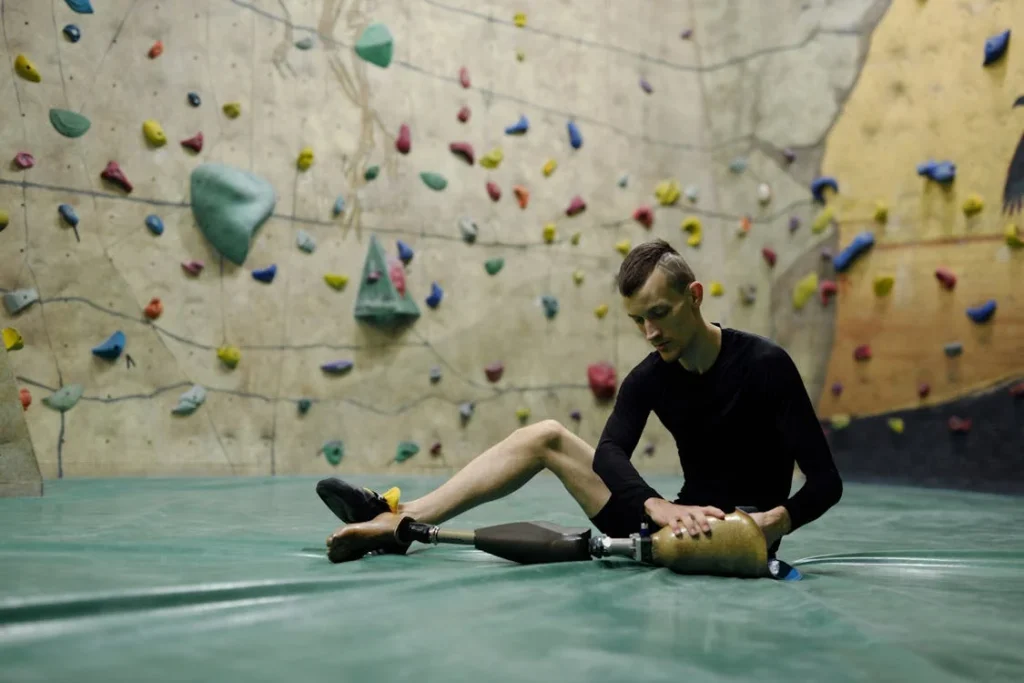
Arjun’s Story: From Athlete to Amputee—and Back Again
A Dream Put on Hold
Arjun was an active 27-year-old when life changed in seconds. A semi-professional football player from Bengaluru, he had spent most of his life on the field.
Running, training, competing—these weren’t just habits; they were a way of life. One rainy evening, on his way home from practice, a speeding car lost control and hit him head-on. His right leg took the full impact.
He woke up in the hospital with rods in his leg, pins in his hip, and a dozen stitches along his thigh. The doctors told him they had saved his leg—for now—but it would be a long recovery. They hoped that with time and effort, he might walk again, but running? That would be unlikely.
The surgeries began. First to stabilize the leg. Then to repair the ligaments. Then to address infection. Over the next 18 months, Arjun went through four major operations.
He worked hard in rehab, but the leg remained weak, swollen, and unable to bear weight. He couldn’t jog. He couldn’t even climb stairs without pain. The field felt further and further away.
A New Way to Compete
Arjun began to read about athletes who had returned to sport with prosthetics. Not just walking, but running, cycling, even competing in international events.
He was amazed by what he found—athletes pushing boundaries with carbon-fiber blades, custom leg builds, and specialized training programs.
The more he read, the more his thinking changed. Maybe saving the limb wasn’t the only way to keep his identity as an athlete. Maybe there was another route—one that didn’t rely on a leg that would never function the same again.
He brought the idea to his doctors and family. They were surprised, but not dismissive. After many discussions and a full evaluation, Arjun made the decision.
He chose elective amputation below the knee. It was one of the hardest decisions he had ever made—but also the first that truly felt like it was about his goals, not just medical advice.
Rebuilding on His Terms
Arjun’s recovery was focused and intense. He approached it like training camp. Each day had a schedule—strength, balance, coordination.
When he received his first running blade, it felt like a second beginning. He started with slow walks, then jogs on a treadmill. By month five, he was outside doing sprints with his coach.
Emotionally, the transformation was just as powerful. He no longer felt like someone waiting to heal. He felt like someone training again. There was purpose in his steps. The prosthetic became a tool, not a symbol of loss.
He had setbacks, of course. Days when the limb was sore or when the prosthetic needed tweaking. But compared to the helplessness he’d felt during limb salvage, these challenges felt manageable. They were part of a path that had movement, direction, and hope.
More Than an Athlete
Today, Arjun is back on the field. Not in the same way as before—but close. He plays in para-sport leagues, coaches young players, and speaks at events about resilience and adaptation.
He’s become a role model—not because he lost a limb, but because he refused to give up the life he wanted.
He often tells others that amputation didn’t take football away from him—it gave it back.
Arjun’s story is a reminder that identity doesn’t always lie in what we keep, but in what we choose to build. He didn’t return to the same life. He created a new one—with strength, speed, and direction that are completely his own.
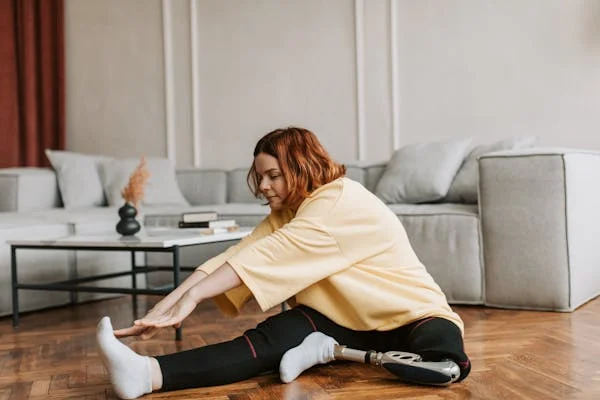
Neha’s Story: A Clean Break From Chronic Infection
A Problem That Never Went Away
Neha had been dealing with complications in her left foot for nearly six years. It started after a small injury that didn’t heal properly. What followed was a pattern of slow infections, hospital visits, antibiotics, and minor procedures that only offered short-term relief.
She had diabetes, which made healing harder and infections more common. Over time, the wound on her foot refused to close completely. Doctors tried different treatments—debridement, dressings, even skin grafts—but the infection kept coming back.
Neha began walking with a limp, and simple tasks like grocery shopping became exhausting. The smell from the wound made her self-conscious. She stopped visiting friends. She stopped traveling. Her world grew smaller.
Eventually, the infection spread deeper, reaching the bone. Doctors explained that her options were limited: continue trying to fight it with more antibiotics and surgeries—or consider amputation.
It wasn’t a sudden emergency, but a slow, constant decline in quality of life. Neha found herself wondering whether this life of endless treatment was really living at all.
Taking Control of the Outcome
It wasn’t an easy decision. Neha was 46 and worked in a small tailoring shop from home. Her biggest concern wasn’t the amputation itself—it was whether she could stay independent afterward.
She lived alone. Who would help her recover? Would she be able to walk again? Would she still be able to sew?
But there was also a sense of calm when she imagined life without the wound. No more painful cleanings. No more infections. No more wondering whether this would be the month it got worse again.
The idea of a clean break—of moving forward without the burden—started to feel less frightening and more freeing.
With the support of her doctor and a few honest conversations with her younger sister, Neha chose to go ahead with the surgery. It was a below-knee amputation that, as she describes it, “finally closed a chapter that refused to end.”
Adjusting to a New Normal
Neha’s recovery was steady and careful. At first, she used a wheelchair and relied on a visiting nurse. Within three weeks, she was using a walker.
By the second month, she was walking short distances with her prosthetic. Each day brought a little more strength, a little more balance.
Her prosthetist designed a lightweight leg that made it easier for her to stand for long periods. That allowed her to return to her tailoring work, sitting at her machine with comfort and ease.
She added a few support tools around the house—grab bars, a higher toilet seat—but mostly, she was able to go back to her old routine.
For Neha, the biggest shift wasn’t just physical. It was emotional. She no longer carried the stress of wondering when the next infection would come.
Her life felt lighter, not because she lost something, but because she finally let go of something that was slowly taking everything from her.
Rebuilding Confidence, Quietly
Neha isn’t someone who talks loudly about her story. But in her small neighbourhood, people noticed the change. They saw her walking to the temple again. They saw her carrying her own groceries. One neighbour commented, “You look happier.” And she was.
She says the prosthetic leg gave her mobility, but the real win was peace of mind. She didn’t need to check bandages, manage pain, or cancel outings anymore. Life could be planned again.
Now, she sometimes speaks to diabetic patients at her clinic, helping them understand when it’s time to stop holding on. She tells them it’s not a failure. It’s a choice for freedom.
Neha’s story is not dramatic. It’s not filled with medals or marathons. But it’s just as powerful. It’s about quiet strength, self-respect, and taking back a life that had slowly slipped away.
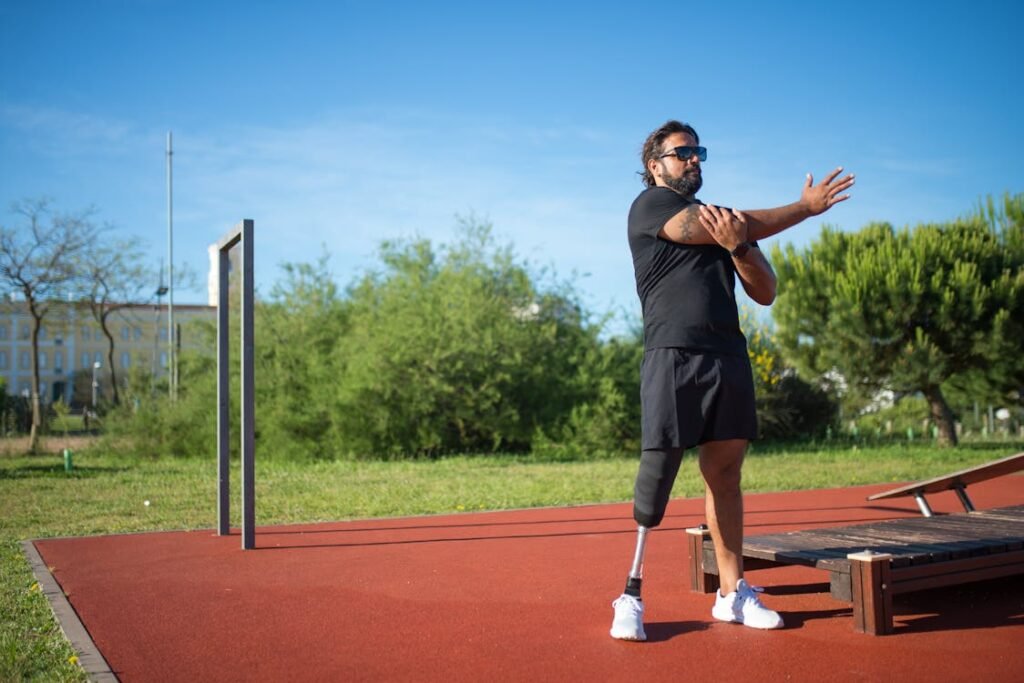
Karan’s Story: Letting Go of Fear, Gaining Back His Future
Living With Uncertainty
Karan was 38 when doctors told him he had osteosarcoma in his lower right leg—a type of bone cancer that usually affects younger people.
At first, he was shocked. He was otherwise healthy, active, and working full-time as a project manager in Delhi. He had a young daughter, a busy life, and plans that didn’t include long hospital stays or life-changing decisions.
The medical team offered him two possible paths. The first was limb salvage surgery—complex but doable. It would involve removing the cancerous part of the bone, replacing it with a metal implant, and undergoing long-term rehab.
The second was below-knee amputation followed by chemotherapy and prosthetic rehabilitation.
For Karan, the idea of removing his leg was terrifying. It felt drastic. Final. Like something that would forever mark him as different. He leaned toward limb salvage, hoping to keep what he had.
The doctors supported either option but were honest about the trade-offs. The surgery would be long. The implant might need replacements in the future. The leg might not be fully functional.
Despite that, Karan chose limb salvage. It felt safer. But over the next year, he began to see the emotional and physical weight of that choice.
When Saving Isn’t the Same as Healing
The surgery was successful in removing the tumor. But recovery was more difficult than expected. The implant made his leg stiff and heavy. Walking was hard.
He needed a cane and struggled with stairs. Worst of all, he never stopped feeling like his leg was fragile—like a small slip could undo everything.
He returned to work part-time but began avoiding travel and long meetings. At home, he hesitated to play too roughly with his daughter, afraid of damaging the implant. The very thing he fought to keep had become a constant reminder of what he had lost.
After a year and a half of living this way, Karan started reading more about amputation—not as a last resort, but as a planned, proactive decision.
He met other cancer survivors who had chosen amputation early on and were now walking, exercising, even hiking. The fear began to shift into curiosity. What if letting go gave him more?
Taking the Leap
This time, the decision came with more clarity. Karan had tried limb salvage. He knew what it gave him—and what it didn’t. With the support of his oncologist and prosthetist, he chose to move forward with amputation.
The surgery felt less emotional than he expected. It felt like taking back control. Within six weeks, he began using a temporary prosthetic. His rehab was structured, and he approached it like a new project—with discipline and patience.
At first, walking felt strange. But the freedom was unmistakable. He could move without fear of damaging anything. He could stand for longer, walk with more energy, and regain confidence in his body.
Looking Forward, Not Back
Today, Karan uses a sleek, custom-designed prosthetic that supports both work and daily activity. He’s back to managing full-time and recently started a fitness program for cancer survivors.
He no longer tiptoes around his life. He participates fully, and his daughter no longer sees him as fragile—but as strong.
He admits he wishes he had known more before choosing limb salvage. Not because it was a mistake, but because the fear of amputation had clouded the facts.
He now speaks openly about his decision in cancer support groups, hoping to help others make choices based not on fear, but on possibility.
Karan’s story is about reclaiming power—not just in his leg, but in his life. Letting go didn’t weaken him. It gave him the future he was missing.

Meera’s Story: Freedom Found in a New Beginning
Years of Silence
Meera was 52 when she decided to take a step that would change the rest of her life. But the story that led her there began long before that.
She had suffered a serious leg injury in her late twenties after a fall from a second-floor balcony. At the time, doctors were able to save her leg, but the damage left her with a permanent limp, chronic pain, and a deep scar that extended from her ankle to her knee.
Over the years, she underwent surgeries to repair tissue, manage swelling, and correct nerve damage. Each time, the procedures helped for a while—until the pain returned.
For two decades, Meera lived in a cycle of pain and pretending. She hid her discomfort during family events, said little when her leg gave out in the middle of the market, and brushed off concern with practiced smiles.
She managed a small clothing boutique in Jaipur, worked on her feet most days, and never asked for help. But the truth was that every step came with pain—and every outing carried the fear of another fall.
Reaching the Turning Point
One monsoon season, Meera slipped on wet steps near her shop and twisted her damaged leg badly. The injury wasn’t serious in a medical sense—but it was the last straw emotionally.
Sitting at home, icing her swollen leg and watching the rain fall outside, she realized how much of her life she had been waiting. Waiting for the pain to ease. Waiting for the next surgery to help. Waiting for a life that never quite arrived.
Her orthopedic doctor told her she had another option. She could choose to amputate the leg and move forward with a prosthetic. It would be a major step, but it could finally give her a chance at a life not defined by fear or pain.
Meera didn’t decide right away. She spent time reflecting, speaking to other amputees online, and quietly watching videos of women walking, dancing, and living fully with prosthetic legs. After a month, she returned to the hospital and scheduled the surgery.
For the first time in years, she felt hopeful—not because things were easy, but because they were finally moving forward.
Learning to Trust Her Body Again
The recovery was gentle and steady. Meera was cautious, but not afraid. She followed every instruction during rehab, practiced balance exercises, and got fitted for her first custom-made prosthetic leg.
The first time she walked across the room without pain, she cried—not from sadness, but from relief.
What followed was a quiet transformation. She began going out more often, walking with confidence, and even redesigning her shop layout so she could move more freely.
Her customers, many of whom had known her for years, noticed the change. She wasn’t limping. She wasn’t leaning. She was simply there—strong, upright, smiling with real ease.
More than anything, Meera says the biggest change was in how she felt about herself. The prosthetic didn’t just support her physically. It helped her let go of the fear that had held her back for decades.
A New Chapter, Finally
Now 55, Meera wears a lightweight prosthetic that fits seamlessly under her sarees. She walks to her store every morning, does her shopping on foot, and spends her evenings gardening—a hobby she had given up long ago.
She recently gave a talk at a women’s wellness event, where she shared her story with quiet grace. Her message was simple. She had spent years saving something that gave her pain. When she finally let it go, she gained freedom.
Meera’s story is not about speed or drama. It’s about choosing peace over pain. About waiting long enough to understand what truly matters, and then having the courage to act on it.
Conclusion
Each story in this article began with a difficult moment—a painful injury, a slow-healing condition, or a long road of surgeries that didn’t lead to freedom. But what connects Ravi, Fatima, Arjun, Neha, Karan, and Meera is not just the fact that they chose amputation. It’s how they used that choice to reclaim control over their lives.
Their paths were different. Some were young and active, others older and quietly strong. Some made the decision early, while others arrived there after years of waiting. But all of them reached a point where they stopped asking, “What am I losing?” and began asking, “What do I want to gain?”
Amputation was not the end of their stories—it was the beginning of something new. With prosthetics, support, and determination, they returned to work, family, community, and the things that brought them joy. They didn’t just adapt—they thrived.
These are stories of courage, not crisis. Of bold choices, not broken lives. And they remind us all that sometimes, letting go of what’s holding us back is the first step toward something better.
The power to choose is a kind of freedom—and every step forward is a victory.



